No products in the cart.
Gemstone Information
What Is A Simulated Diamond
In the glittering world of gemstones, the allure of diamonds has been undeniable for centuries. Yet, in recent times, a new star has risen in the jewelry sky – the simulated diamond. These marvels of modern science and craftsmanship offer an alternative to traditional diamonds, blending beauty with accessibility in a way that is transforming the industry.
Simulated diamonds, distinct from lab-grown diamonds, are man-made gems designed to emulate the appearance of natural diamonds to the untrained eye. While they share the dazzling brilliance and aesthetic of natural diamonds, their journey from creation to adornment is rooted in technological innovation rather than geological processes. This distinction makes them a fascinating subject, not just for jewelry enthusiasts, but for anyone intrigued by the intersection of science, art, and fashion.
The surge in popularity of simulated diamonds is driven by a combination of factors. Cost-effectiveness, ethical sourcing, and versatile design possibilities have made them a go-to choice for many. Whether it’s for an engagement ring, a special gift, or just to add a touch of elegance to everyday wear, simulated diamonds offer a sustainable and affordable luxury.
As we delve deeper into the world of simulated diamonds, we will explore their types – such as the popular Cubic Zirconia and Moissanite – and understand their unique properties. From the intricacies of their manufacturing process to their role in the evolving landscape of ethical jewelry, this article aims to provide a comprehensive guide to what simulated diamonds are and why they have become a cherished choice in contemporary jewelry design.
The Concept of Simulated Diamonds
At the heart of the discussion about simulated diamonds is an understanding of what exactly these gemstones are and how they differ from their natural and lab-grown counterparts. Simulated diamonds are crafted to mimic the appearance of natural diamonds, offering a visually similar alternative but with significant differences in composition and properties.
Unlike natural diamonds, which are formed over billions of years under the Earth’s surface, and lab-grown diamonds, which are actual carbon diamonds created in controlled laboratory environments, simulated diamonds do not have the same chemical and physical properties as real diamonds. They are made from various materials, such as high-quality crystal, glass, or cubic zirconia, and more recently, Moissanite, a crystal form of silicon carbide.
Each of these materials is chosen for its ability to replicate the brilliance and clarity of a real diamond. Cubic Zirconia, for example, is a popular choice due to its affordability and close visual resemblance to diamonds. It’s synthesized from zirconium dioxide and is prized for its durability and flawless appearance. Moissanite, on the other hand, offers a unique fire and a slightly different refractive index, making it a favored choice for those looking for a diamond-like stone with distinctive properties.
The key to understanding simulated diamonds lies in recognizing their role as an alternative, rather than a direct substitute. They cater to a market that values the aesthetic of diamonds but may prioritize ethical considerations, affordability, or specific design aspirations. For instance, simulated diamonds provide an ethical alternative to natural diamonds, whose mining can sometimes have adverse environmental and social impacts. Additionally, the affordability of simulated diamonds makes high-end jewelry designs more accessible to a broader audience.
It’s also important to note that while simulated diamonds can closely resemble natural diamonds in appearance, expert jewelers and gemologists can distinguish between them using specific tests and equipment. This distinction is critical for consumers to understand, ensuring transparency and trust in their purchases.
Types of Simulated Diamonds
Simulated diamonds come in various forms, each offering unique qualities and aesthetics that cater to diverse preferences and needs. Understanding these different types is crucial for anyone considering simulated diamonds, as it allows for a more informed choice based on characteristics such as appearance, durability, and cost.
Cubic Zirconia (CZ)
Cubic Zirconia stands as one of the most well-known and widely used diamond simulants. Made from zirconium dioxide, it’s admired for its remarkable ability to replicate the brilliance and clarity of a real diamond at a fraction of the cost. While CZ is softer than a natural diamond, it still maintains a commendable level of durability, making it suitable for everyday wear. It’s particularly popular in fashion jewelry due to its affordability and visual appeal.
Moissanite
Moissanite is another highly sought-after simulant, known for its fire and sparkle, which even surpasses that of a natural diamond. Composed of silicon carbide, it’s a near-colorless stone that was originally discovered in meteorites. Moissanite is significantly harder than Cubic Zirconia, making it more resistant to scratches and wear. Its unique refractive properties give it a distinctive, fiery appearance that’s especially captivating under natural light.

White Sapphire
White Sapphire is a natural gemstone that offers a more subtle shimmer compared to a diamond. Though not as brilliant or hard as diamonds, it is a durable and relatively affordable option. White sapphires are often chosen for their understated elegance and are a popular choice in engagement rings and fine jewelry for those seeking a touch of sophistication without the typical diamond sparkle.
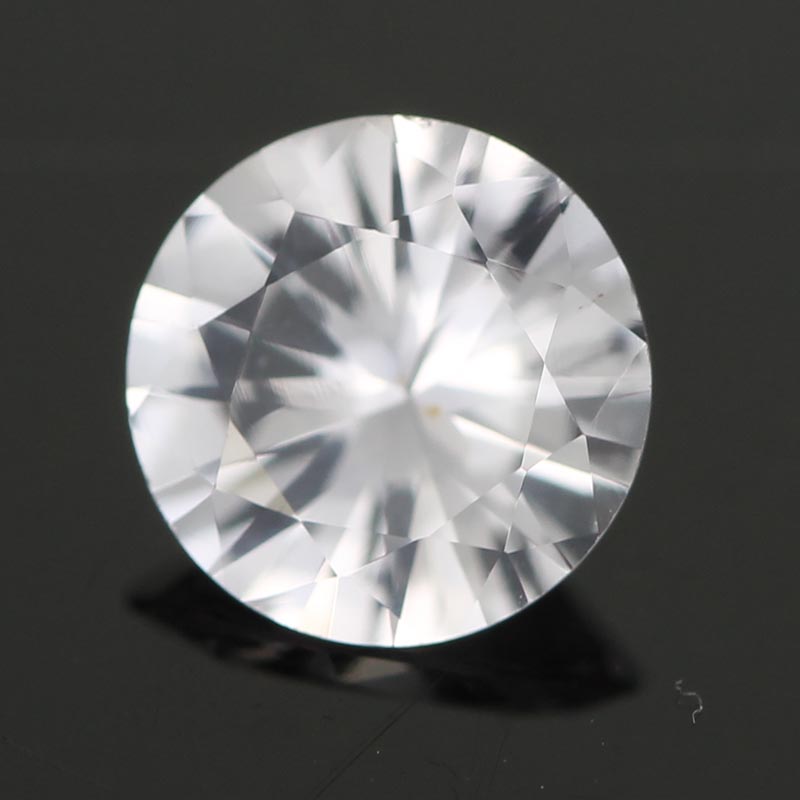
White Topaz
White Topaz is another natural gemstone used as a diamond simulant. It’s a transparent stone with a decent level of hardness, though it’s more prone to scratches compared to diamonds and other simulants like Moissanite. White Topaz is valued for its clarity and can be cut into various shapes, making it a versatile choice for different jewelry designs.

Each of these simulants offers a unique combination of visual characteristics, durability, and price points, catering to a wide range of tastes and budgets. While they share the common goal of emulating the beauty of a natural diamond, their distinct properties make them suitable for different applications and style preferences. Whether it’s the affordability of Cubic Zirconia, the exceptional brilliance of Moissanite, the elegance of White Sapphire, or the clarity of White Topaz, there’s a simulated diamond to suit every desire and occasion.
Manufacturing Process
The manufacturing process of simulated diamonds is a fascinating blend of art and science, where innovation and technology come together to create stunning gemstones. Unlike the natural diamond formation, which takes billions of years under high pressure and temperature conditions deep within the Earth, simulated diamonds are crafted in controlled laboratory environments. This section explores the manufacturing techniques of some of the most popular simulated diamonds.
- Cubic Zirconia (CZ): The production of Cubic Zirconia involves a method known as the skull crucible process. This method starts with powdered raw materials, primarily zirconium dioxide mixed with stabilizers like calcium and magnesium. These materials are then melted at incredibly high temperatures, close to 4,982°F (2,750°C). The molten material is cooled slowly and crystallized to form a cubic zirconia rough. This rough is then cut and polished using diamond-cutting techniques to give it the desired shape and brilliance. The precision in cutting and polishing is crucial in defining the final appearance and quality of the CZ gemstone.
- Moissanite: Manufacturing Moissanite is a more complex process, owing to its unique properties. Originally found in meteorites, natural moissanite is extremely rare, so the moissanite used in jewelry today is synthetically produced. The process involves the thermal decomposition of a preceramic polymer into silicon carbide (SiC) under high-temperature conditions. This SiC is then crystallized to form single Moissanite crystals. These crystals are carefully cut, faceted, and polished to bring out their fiery brilliance. The process not only replicates the look of natural diamonds but also ensures the hardness and durability of Moissanite.
- White Sapphire: White Sapphire, being a natural gemstone, doesn’t undergo a synthetic manufacturing process. However, its preparation for use in jewelry involves mining, cutting, and polishing. White sapphires are sourced from deposits around the world, with notable sources in countries like Sri Lanka, Madagascar, and Myanmar. After mining, they are evaluated for quality and then expertly cut into various shapes. The cutting process is crucial as it influences the gemstone’s ability to reflect light, thereby determining its sparkle and overall aesthetic appeal.
- White Topaz: Similar to White Sapphire, White Topaz is also mined from the Earth. The raw topaz is extracted from various global locations, including Brazil, Nigeria, and China. The extracted topaz crystals are then assessed for clarity and color. They are usually heat-treated to enhance their transparency and whiteness, as natural topaz often has tints of color. Precision cutting and polishing are the final steps, which transform the raw crystals into beautiful gemstones used in jewelry.
Each simulated diamond type, whether created entirely in a lab or mined and processed, undergoes a unique journey from its raw state to the final, dazzling gemstone. The meticulous processes involved in their creation not only contribute to their beauty but also their ability to offer a sustainable and ethical alternative to natural diamonds. This understanding of their manufacturing process adds an extra layer of appreciation for these remarkable gemstones and their place in the world of jewelry.
Characteristics of Simulated Diamonds
Simulated diamonds, while designed to emulate the appearance of natural diamonds, possess unique characteristics that set them apart. Understanding these attributes is crucial for anyone considering the purchase of simulated diamond jewelry. Here, we delve into the key characteristics such as optical properties, durability, and maintenance requirements of popular simulated diamonds like Cubic Zirconia, Moissanite, White Sapphire, and White Topaz.
- Optical Characteristics
- Cubic Zirconia (CZ): CZ is known for its high refractive index and strong dispersion, traits that give it a notable brilliance and a rainbow-like fire. However, it is slightly less hard than natural diamonds, ranking at 8-8.5 on the Mohs scale of mineral hardness, which affects how light plays through the stone.
- Moissanite: Moissanite stands out with its exceptional refractive index, higher than that of a diamond, resulting in a pronounced fiery sparkle. This brilliance is one of its most distinguishing features, often characterized by a colorful, rainbow effect.
- White Sapphire: Compared to diamonds, white sapphires offer a more subdued sparkle, owing to their lower refractive index. They present a different kind of beauty, one that’s more understated yet elegant.
- White Topaz: While it doesn’t possess the same level of brilliance as a diamond, white topaz has a clear and clean appearance, providing a subtle glow and a modest sparkle.
- Durability
- Cubic Zirconia: Despite being softer than diamonds, CZ is relatively hardy and resistant to scratches and abrasions, making it suitable for regular wear.
- Moissanite: Ranking high on the Mohs scale, moissanite is highly durable and resistant to scratching, comparable to diamonds in longevity.
- White Sapphire: As a natural gemstone, white sapphire is quite durable and suitable for everyday wear, though it may require occasional maintenance to retain its shine.
- White Topaz: This gemstone requires more careful handling than diamonds. Its surface is prone to scratches over time, which can dull its appearance.
- Care and Maintenance
- Cubic Zirconia and Moissanite: Both these stones are relatively low maintenance. Regular cleaning with mild soap and water, followed by a soft cloth drying, is typically sufficient to maintain their sparkle.
- White Sapphire: To preserve its natural shine, white sapphire should be cleaned regularly, especially since it can accumulate dirt and oils more easily than diamonds.
- White Topaz: Requires more attentive care due to its propensity for scratches. Protective settings in jewelry and periodic professional cleanings are recommended to keep it looking its best.
Cost Comparison
One of the most appealing aspects of simulated diamonds is their affordability compared to natural diamonds. This cost-effectiveness is a significant factor for many consumers, especially those looking for luxury and elegance at a more accessible price point. In this section, we’ll compare the costs of popular simulated diamonds – Cubic Zirconia, Moissanite, White Sapphire, and White Topaz – with that of natural diamonds, offering insights into what drives these price differences.

- Cubic Zirconia (CZ): CZ is renowned for its remarkable affordability. It is significantly less expensive than natural diamonds, often priced at a fraction of the cost. This price difference is primarily due to the less intensive manufacturing process and the abundance of raw materials used in its production. For instance, a CZ stone that visually matches a high-quality one-carat diamond can be obtained for a mere fraction of the diamond’s price.
- Moissanite: Moissanite, while more expensive than Cubic Zirconia, is still much more affordable than natural diamonds. The cost of Moissanite typically depends on its size and quality but generally ranges from a few hundred to a few thousand dollars, significantly less than an equivalent natural diamond. This pricing makes Moissanite an attractive option for those seeking a gemstone with close visual similarity to a diamond, without the high price tag.
- White Sapphire: White Sapphire is another cost-effective alternative to diamonds. Though it’s a natural gemstone and not lab-created like CZ or Moissanite, it’s still more affordable than diamonds. The price of white sapphire varies depending on its size, quality, and source, but it generally falls well below that of diamonds, making it a budget-friendly option for those desiring a natural stone.
- White Topaz: As with White Sapphire, White Topaz is a natural gemstone and is one of the most economical options among diamond simulants. Its price is considerably lower than that of natural diamonds, making it an attractive choice for budget-conscious consumers. It’s worth noting, however, that the lower price also reflects its lower hardness and durability compared to diamonds.
When considering cost, it’s important to factor in not just the initial purchase price but also the long-term value. Natural diamonds tend to hold their value over time and can even appreciate, whereas simulated diamonds typically do not have significant resale value. However, for many buyers, the immediate affordability and aesthetic appeal of simulated diamonds outweigh this consideration.
Market Trends and Popularity
The market for simulated diamonds has witnessed a significant surge in popularity, a trend driven by a confluence of factors ranging from evolving consumer values to advancements in gemstone technology. This shift in preference towards simulated diamonds like Cubic Zirconia, Moissanite, White Sapphire, and White Topaz is reshaping the landscape of the jewelry industry.
- Growing Ethical and Environmental Awareness: One of the primary drivers of the popularity of simulated diamonds is the growing consumer consciousness regarding ethical and environmental concerns. With increasing awareness of the environmental impact and ethical issues associated with mining natural diamonds, more consumers are turning to sustainable and conflict-free alternatives like simulated diamonds. This shift aligns with a broader trend in consumer behavior prioritizing eco-friendly and socially responsible products.
- Advancements in Manufacturing Technology: Technological advancements have significantly improved the quality of simulated diamonds, making them more appealing to consumers seeking diamond-like aesthetics without the high cost. Modern manufacturing techniques have enabled the creation of simulated diamonds that are almost indistinguishable from natural diamonds to the naked eye, attracting a broader consumer base.
- The Appeal of Affordability: The affordability of simulated diamonds is a key factor in their growing popularity. With the economic challenges and changing priorities of modern consumers, the lower price point of simulated diamonds makes them an attractive option for those who desire the luxury and beauty of diamonds without the hefty price tag.
- Versatility in Jewelry Design: The versatility and variety that simulated diamonds offer in jewelry design have also contributed to their rising popularity. From classic engagement rings to trendy fashion pieces, simulated diamonds provide designers with the freedom to create diverse and innovative designs. This versatility appeals to a wide range of tastes and preferences, further driving the demand for these gemstones.
- Changing Consumer Perceptions: There has been a notable shift in consumer perception regarding simulated diamonds. Once viewed as merely ‘imitations,’ these gemstones are now appreciated for their own unique qualities and beauty. The distinction between natural and simulated diamonds is becoming less about comparative value and more about personal preference and lifestyle alignment.
- Market Expansion: The simulated diamond market is expanding globally, with increasing demand noted in various regions, including North America, Europe, and Asia. This expansion is supported by the growing presence of online jewelry retailers and marketing efforts that highlight the quality and ethical advantages of simulated diamonds.
How to Choose a Simulated Diamond
Choosing a simulated diamond is an exciting journey that combines personal style with practical considerations. Whether you’re looking for an engagement ring, a piece of statement jewelry, or a beautiful yet affordable accessory, understanding how to select the right simulated diamond is key. Here are some essential tips to guide you through the process:
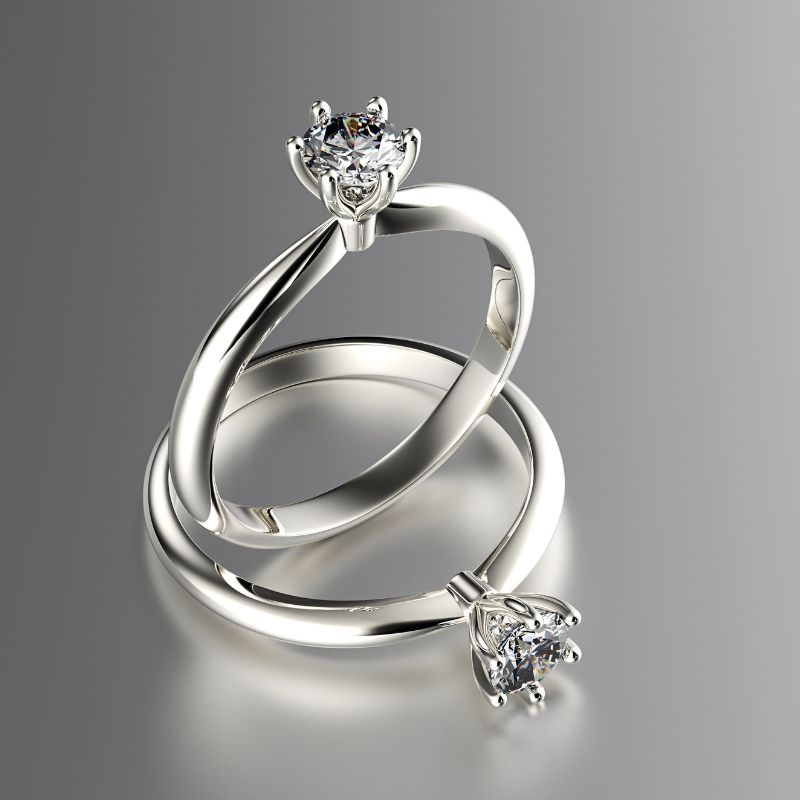
- Understand the Different Types of Simulated Diamonds: As discussed earlier, there are several types of simulated diamonds, including Cubic Zirconia, Moissanite, White Sapphire, and White Topaz. Each type has its unique properties, appearance, and price range. Familiarize yourself with these differences to determine which type aligns best with your preferences and needs.
- Consider the Cut and Shape: The cut and shape of a simulated diamond significantly influence its appearance and brilliance. Look for a cut that maximizes the stone’s reflective qualities, such as a round brilliant cut for Cubic Zirconia or a precision cut for Moissanite. The shape should complement the design of the jewelry and match your personal style.
- Evaluate the Clarity and Color: While simulated diamonds don’t have the same grading system as natural diamonds, clarity and color are still important. A high-quality simulated diamond should be clear, without visible inclusions, and colorless or near-colorless to mimic the look of a real diamond.
- Assess the Setting and Metal: The setting and metal of the jewelry piece can enhance the overall look of the simulated diamond. Consider durable metals like gold, platinum, or sterling silver, which can complement the stone’s brilliance. The setting should secure the stone well and match the design you prefer.
- Check for Durability and Hardness: Depending on your lifestyle and how often you plan to wear the piece, the durability of the simulated diamond is an important factor. Moissanite, for example, is known for its hardness and is suitable for everyday wear, while Cubic Zirconia, though durable, may require more careful handling.
- Consider the Purpose and Occasion: The intended purpose and occasion can influence your choice. For example, an engagement ring might call for a more durable and brilliant stone like Moissanite, while a fashion accessory for occasional wear could be well-suited to Cubic Zirconia or White Topaz.
- Budget and Value for Money: Set a budget before you start shopping and look for the best value within that range. Simulated diamonds offer the advantage of being more affordable than natural diamonds, but prices can vary based on the type and quality of the stone and the craftsmanship of the jewelry.
- Research and Buy from Reputable Sellers: Ensure you purchase from reputable sellers who provide detailed information about the stone and the jewelry piece. Look for sellers with positive reviews, transparent policies, and possibly, a certification of authenticity for the stone.
- Personal Preference and Aesthetic Appeal: Ultimately, the choice should reflect your personal taste and the aesthetic appeal you seek. Whether it’s the fiery brilliance of Moissanite or the subtle elegance of White Sapphire, the simulated diamond you choose should resonate with your personal style and bring you joy.
By considering these factors, you can confidently select a simulated diamond that not only looks beautiful but also aligns with your preferences, lifestyle, and budget, ensuring a purchase you will cherish for years to come.
Conclusion
In the shimmering world of gemstones, simulated diamonds present a fascinating and accessible option. Through this exploration of what simulated diamonds are, from their unique manufacturing processes to their diverse types and characteristics, we’ve seen how these gemstones offer an appealing alternative to natural diamonds. They cater to a variety of preferences, needs, and values, balancing beauty, cost, and ethical considerations.
Simulated diamonds like Cubic Zirconia, Moissanite, White Sapphire, and White Topaz each bring their unique charm and qualities to the table. They stand as testaments to human ingenuity, offering the sparkle and allure of diamonds in an ethical, more affordable form. The advancement in technology and craftsmanship has enabled these stones to achieve a level of brilliance and beauty that rivals, and in some aspects, surpasses that of natural diamonds.
The rising popularity of simulated diamonds reflects changing consumer attitudes, prioritizing sustainability, ethical production, and value for money. This shift is reshaping the jewelry landscape, offering new opportunities for consumers to enjoy luxury and elegance in a more accessible and responsible manner.
Whether you’re drawn to the fiery brilliance of Moissanite, the flawless appearance of Cubic Zirconia, the natural subtlety of White Sapphire, or the clear charm of White Topaz, there is a simulated diamond to suit every taste and occasion. By understanding the key aspects of these gemstones and how to choose the right one, you’re well-equipped to make an informed decision that aligns with your personal style and ethical values.



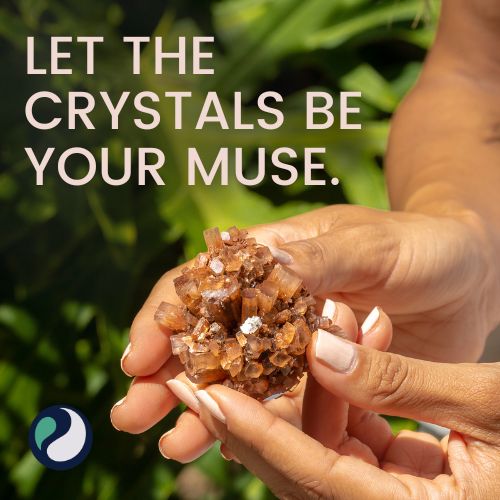


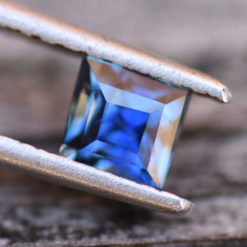
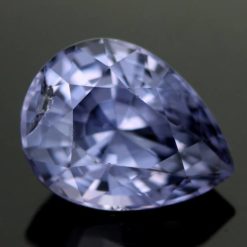
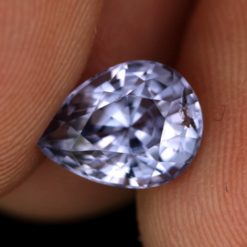


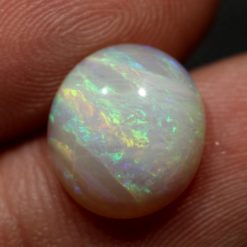
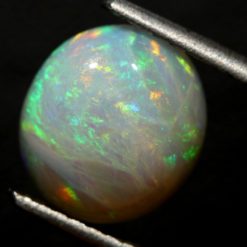



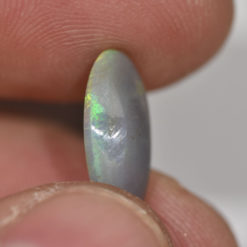
I appreciate you for sharing this valuable information. In my opinion, it’s fantastic